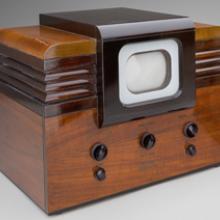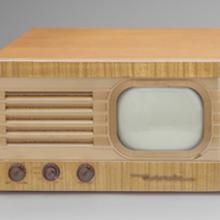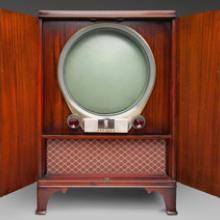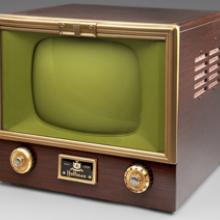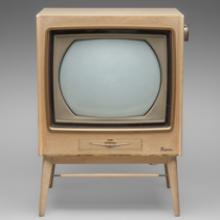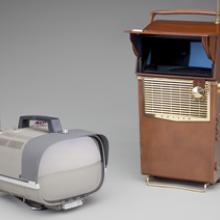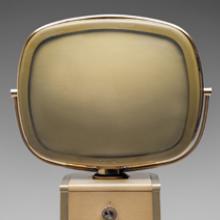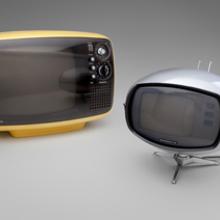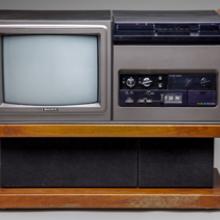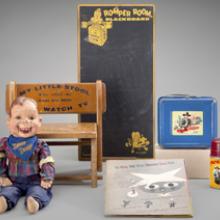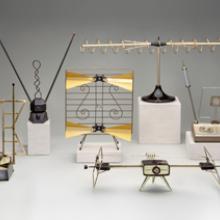Television: TV in the Antenna Age
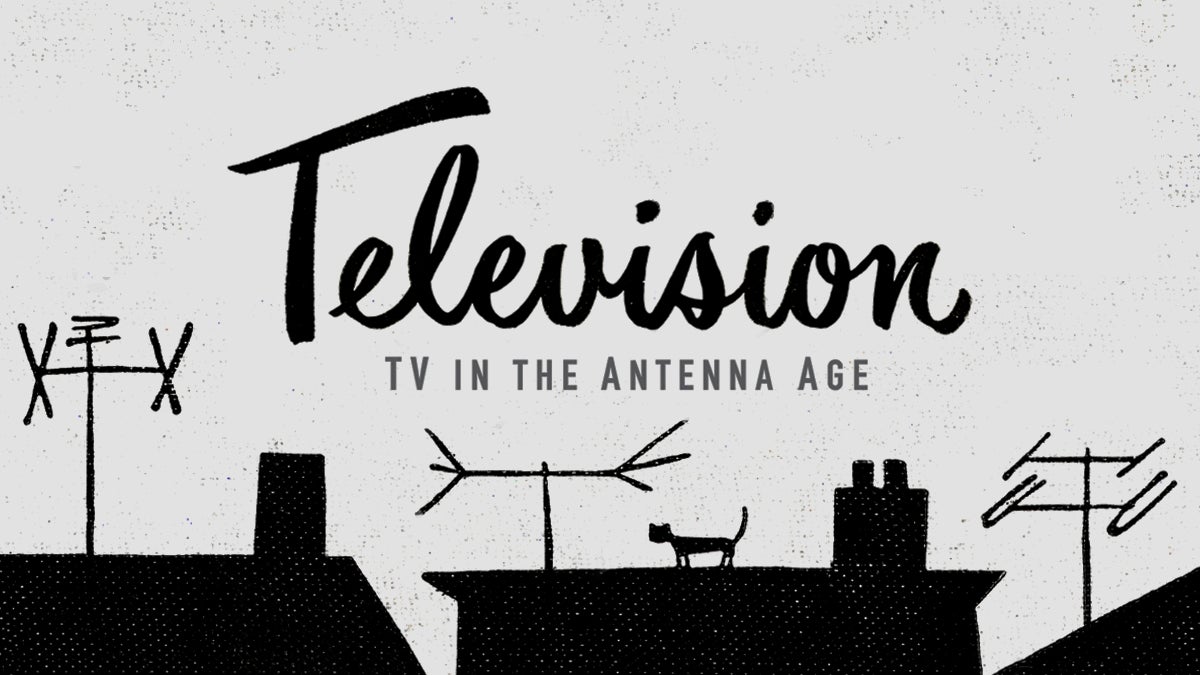
TV will never be a serious competitor for radio because people must sit and keep their eyes glued on the screen; the average American family hasn't time for it.
Author unknown, The New York Times, 1939
Television: TV in the Antenna Age
Skeptics abounded when the television was introduced at world's fairs held in New York and on San Francisco's Treasure Island in 1939. Despite how magical that box with the moving pictures must have appeared to those lucky visitors who viewed demonstration models, few could imagine television competing with radio's far-reaching networks and larger-than-life performers, or that many of those stars would make the successful transition to the new medium. Within a matter of decades, proceeding generations found it difficult to imagine life before television.
San Francisco can rightly claim an important role in television history. Inventor Philo Farnsworth was the first to demonstrate electronic television at his Green Street laboratory in 1927. More than a decade of research and development was required before the first commercial sets made their ill-timed debut in 1939. World War II interrupted commercial production almost before it began and television development stalled. But the postwar economic boom was perfectly suited for a new technology geared to entertain those with increasing hours of leisure time. In 1946, only a few thousand television sets were in use and only near metropolitan areas that offered broadcast service. By 1950, television ownership soared to six million; and at the end of the 1950s, more than fifty million televisions were in use.
Watching television became ritual behavior. It altered mealtimes, changed homework schedules, and permeated nearly every aspect of American society. Related products became major industries— frozen dinners, TV trays, even TV lamps. Lines of dialogue were adopted as popular catchphrases—w hat child in the 1950s didn't know to answer, "It's Howdy Doody time" when asked, "Say kids, what time is it?" And viewers feasted on an ever-growing schedule of programming that included variety shows, adventure serials, and increasingly, situation comedies. The very rhythm of life in most households was dictated by the offerings of one of three network providers—NBC (National Broadcasting Company), CBS (Columbia Broadcasting System), and ABC (American Broadcasting Company).
Television viewing habits began to change in the late 1970s. Entrepreneur Ted Turner beamed his Atlanta station's signal via satellite to cable providers in faraway states, launching his "Superstation" and immediately raising expectations for more television viewing choices. Increasing numbers of Americans were turning off the networks and watching movies on recently introduced Betamax (Sony) and VHS (RCA) players. Network TV would still dominate, but gone were the days when viewers were limited to only three or four choices for their televised entertainment.
In recent years, the average American family doesn't seem to have time to "sit and keep their eyes glued to the screen." Increasing numbers of consumers are turning away from traditional television sets and choosing to view their content "on-the-go" via laptop computers and hand-held devices with screens smaller than those of the earliest televisions. Today's digital video recorders and web-streamed content allow customized viewing, and the idea of remotely located viewers gathering at a particular time to watch the same show appears almost quaint.
Television: TV in the Antenna Age presents a glimpse at the first four decades of television as illustrated by the era's popular performers and the variety of sets on which they appeared. Models range from the earliest commercial sets with 7-inch screens in Art Deco wooden cabinets to colorful plastic versions from the 1970s designed to look like space helmets and flying saucers. All serve to evoke a time when that technological marvel, in its splendid, varied, and sometimes strange forms, was the unchallenged centerpiece of the American household—offering escapism, reality, and a commonly shared experience in households across the country.
This exhibition was made possible through the generous participation of the San Francisco Bay Area television collecting community. Special thanks to lenders Tom Albrecht, Nat Pendleton, and Christopher Musselman for their assistance with technical information.
TV Guide's debut was well timed in 1953, the year television ownership reached more than fifty percent of American households. Publisher Walter Annenberg purchased several regional television publications and founded his small-format magazine as the first national viewing guide. The premier issue featured Lucille Ball's newborn, Desi Arnaz, Jr., capitalizing on television's first mega-event, when 40 million Americans tuned in to watch Lucy and Ricky Ricardo welcome their fictional newborn, Little Ricky, on the wildly popular I Love Lucy program.Today's consumers, accustomed to on-screen selection menus on televisions and customized viewing via the Internet, may have difficulty imagining the cultural prominence of a published television guide. But for generations of viewers from the 1950s through the 1970s, TV Guide was a constant, well-used companion found on nightstands and coffee tables across the United States. Its weekly schedule of network programming was discussed and debated, celebrated and scorned, and served as the ultimate source for selecting each evening's television entertainment.
Although TV Guide championed and helped popularize the young medium upon which the magazine's success depended, its editorial writers offered astute and often sharp-edged criticism of television shows and network programmers, and the publication quickly became known as a reliable advocate for viewers. Articles by prominent writers such as John Updike, William Saroyan, and Margaret Mead confirmed the magazine's reputation as a serious publication.
The magazine's covers provide a rich visual record of television's most popular programs and entertainers, often in caricature. Contributing illustrators include Jack Davis, Richard Amsel, and Al Hirschfeld, who produced dozens of covers during his long association with the magazine. Photographer Gene Trindl's imaginatively staged shots were featured on more than 200 covers. And TV Guide's iconic status attracted a diverse range of fine artists who produced covers, including Norman Rockwell, Andy Warhol, Romare Bearden, and Salvador Dali.
The publication reached an astounding twenty million households at its peak in 1977 when one in every five magazines sold in the United States was a TV Guide. Although challenges to both network-based television and print media have diminished the publication's cultural preeminence,TV Guide continues to serve television viewers in published form as TV Guide Magazine and on the Internet with its familiar television menu viewable online.
Photography is not permitted.
© 2011 by San Francisco Airport Commission. All rights reserved.
